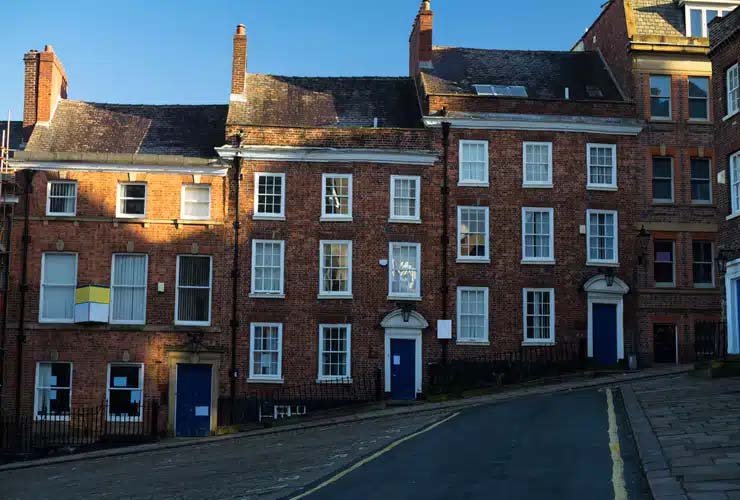Sheffield Buy to Let: As an investor, the idea of owning a property that generates rental income while potentially appreciating in value over time is undoubtedly enticing. Sheffield, a vibrant city in the United Kingdom, offers promising opportunities for property investors seeking long-term gains. Whether you are a seasoned investor or a first-time buyer looking to make a profitable investment, this guide will provide you with valuable insights and essential information to help you navigate the Sheffield buy-to-let market successfully.
Sheffield, a city with a rich industrial heritage, has evolved into a vibrant and sought-after property investment destination in the United Kingdom. As the city continues to grow and develop, its property market offers promising opportunities for investors seeking buy-to-let ventures. In this guide, we will explore various neighborhoods within Sheffield and their potential for property investment, providing essential information for both seasoned investors and first-time buyers.
Top Areas for Sheffield Buy to Let Investments
1. City Centre Living
Population: 30,000 | Average House Price: £114,200
Sheffield’s city centre has witnessed rapid growth in the city living market, making it an attractive location for property investment. With a mix of new-build blocks and period conversions, investors have plenty of buy-to-let options. Notably, the iconic 1960s Grade II listed Park Hill Flats have been redeveloped into a fashionable city living district. The area boasts strong rental yields, with the S1 postcode area offering up to 6.85% yields.
2. West Sheffield – Park Square Bridge
Population: 192,000 | Average House Price: £190,000-£330,000
West Sheffield is the main mid-upper market residential area, comprising several suburbs, each with its own distinct charm. The inner suburbs are particularly suitable for professional buy-to-lets due to their proximity to the city centre, the university, and renowned medical institutions like the Royal Hallamshire Hospital and Sheffield Children’s Hospital. Walkley is an up-and-coming area with good transport links, while suburbs like Broomhill, Crosspool, Crookes, and Fulwood cater to families and command higher prices, resulting in yields of 3%-4%, which can double for student-shared properties.

3. South West Sheffield
Population: 63,000 | Average House Price: £240,000-£390,000
Running between Abbeydale Road and Ecclesall Road, South West Sheffield is a popular residential spot filled with amenities such as bars, restaurants, and shops, making it attractive to property investors. Nether Edge, closer to the city, offers better value properties, while further out, areas like Dore and Totley feature some of Sheffield’s most expensive properties. Yields in the pricier areas hover around 3%.
4. South East Sheffield
Population: 158,000 | Average House Price: £170,000-£200,000
South East Sheffield comprises mid-priced suburbs, ideal for family buy-to-let investments. The region offers a diverse array of areas, with some, like Heeley and Meersbrook, considered up-and-coming. Gleadless Valley features a large 1960s estate development, while the Nortons benefit from proximity to the expansive Graves Park. Further out, areas like Intake, Frecheville, Hackenthorpe, and Beighton present opportunities for good value properties. Rental yields in this area average around 4%-5%.
5. East Sheffield
Population: 133,500 | Average House Price: £100,000 – £120,000
East Sheffield, located between the city and Rotherham, offers the most affordable properties in the city. This area includes traditional terraces built for Sheffield’s steelworkers and newer local authority estates. While some areas in East Sheffield may have a reputation for social issues, they present attractive opportunities for investors looking for cost-effective properties. Rental yields in certain areas, like the S2 postcode, can reach an impressive 8.16%.
6. Considering Rotherham
Population: 263,300 | Average House Price: £159,900
For those considering options beyond Sheffield, Rotherham, a separate town to the northeast of Sheffield, offers investment possibilities with lower property prices. Buy-to-let yields of around 4%-5% can be expected in areas like S60, S61, and S62.
Read Also: Brighton Buy to Let: A Lucrative Investment Opportunity
Understanding the Sheffield Property Market
Sheffield, located in South Yorkshire, boasts a diverse property market with a mix of Victorian-era homes, modern apartments, and new developments. Understanding the current state of the market is crucial before making any investment decisions.
Economic Indicators and Growth Prospects
Analyzing Sheffield’s economic indicators and growth prospects will give you valuable information about the city’s investment potential. Consider factors like population growth, job opportunities, and local infrastructure development.
Rental Demand and Yields
Investigate the demand for rental properties in Sheffield and calculate the potential rental yields. Areas with high rental demand and strong yields can be excellent choices for buy-to-let investments.
Choosing the Right Location

Selecting the right location is paramount when investing in buy-to-let properties. Different areas of Sheffield offer varying investment opportunities and potential returns.
City Centre Living
Investing in the city centre can attract young professionals and students. Proximity to amenities, universities, and entertainment hubs makes the city centre an appealing choice for renters.
Suburban Serenity
Suburban areas offer a quieter lifestyle and are popular among families and working professionals seeking a balance between urban amenities and peaceful surroundings.
Emerging Areas
Identifying emerging areas with development potential can be a strategic investment move. These areas often provide early-stage investment opportunities with the potential for significant growth.
Read Also: House Price Predictions for Next 5 Years in UK: Experts’ Opinions
Property Types and Investment Strategies
Before investing, consider the types of properties available in Sheffield and the investment strategies that align with your financial goals.
Apartments and Flats
Apartments and flats are prevalent in Sheffield and can attract young professionals and students seeking a modern and convenient lifestyle.
Terraced Houses
Terraced houses offer a classic investment option and are often located in desirable neighborhoods with strong rental demand.
Houses of Multiple Occupancy (HMOs)
Investing in HMOs can provide higher rental yields, especially in areas close to universities and major employers.
Renovation and Flipping
For investors with a passion for renovation, buying properties in need of refurbishment and then selling at a higher price can be a lucrative strategy.
Financing and Legal Considerations
Understanding the financial and legal aspects of buy-to-let investments is essential for a smooth and successful transaction.
Mortgage Options
Research different mortgage options tailored to buy-to-let investors. Consider interest rates, loan terms, and eligibility criteria.
Tax Implications
Be aware of the tax implications related to rental income, capital gains, and stamp duty to avoid any financial surprises.
Legal Obligations
Familiarize yourself with landlord responsibilities, tenancy agreements, and safety regulations to ensure compliance with the law.
Property Management and Maintenance
Efficient property management is crucial for a successful buy-to-let venture. Explore different property management options and how to maintain your investment.
Self-Management vs. Letting Agencies
Decide whether you will manage the property yourself or hire a reputable letting agency to handle tenant-related matters.
Maintenance and Repairs
Regular maintenance and timely repairs are essential to keep your property in top condition and retain tenants.
The Pros and Cons of Sheffield Buy-to-Let Investments
Like any investment, Sheffield buy-to-let properties come with their own set of advantages and disadvantages.
Pros
- Potential for rental income
- Long-term capital appreciation
- Diversification of investment portfolio
Cons
- Property market fluctuations
- Tenant-related challenges
- Initial financial outlay
Sheffield’s property market provides a diverse range of investment opportunities for property investors. From the bustling city centre to the peaceful suburbs, each area offers its unique advantages and potential returns. As you embark on your property investment journey in Sheffield, conduct thorough research, and consider your investment goals to make informed decisions. Whether you opt for city centre living, explore the west, south-west, south-east, or the more affordable east and Rotherham, Sheffield’s property market has much to offer for those seeking profitable and rewarding buy-to-let investments.
Read Also: 10 Affordable Towns to Buy Home in the UK
FAQ’s
Q1: What are the key neighborhoods in Sheffield for buy-to-let investments?
A1: Sheffield offers several key neighborhoods for buy-to-let investments, including the city centre, West Sheffield (Park Square Bridge), South West Sheffield, South East Sheffield, and East Sheffield.
Q2: What is the average house price in Sheffield’s city centre, and what are the rental yields?
A2: The average house price in Sheffield’s city centre is £114,200, and rental yields can go up to 6.85% in the S1 postcode area.
Q3: Which Sheffield suburbs are suitable for professional buy-to-lets with good rental yields?
A3: Suburbs like Broomhill, Crosspool, Crookes, and Fulwood in West Sheffield offer good rental yields of 3%-4% and can double for student-shared properties.
Q4: What is the average house price range in South West Sheffield, and what are the rental yields?
A4: In South West Sheffield, the average house price ranges from £240,000 to £390,000, and rental yields in the pricier areas hover around 3%.
Q5: Which areas in Sheffield offer the most affordable properties and highest rental yields?
A5: East Sheffield, located between the city and Rotherham, offers the most affordable properties, with an average house price of £100,000 – £120,000. Certain areas, like the S2 postcode, can achieve impressive rental yields of 8.16%.
Q6: What are the main considerations when investing in Sheffield buy-to-let properties?
A6: When investing in Sheffield buy-to-let properties, it’s essential to consider the location, economic indicators, rental demand, property types, financing options, legal obligations, and property management strategies. Conduct thorough research and align your investment goals to make informed decisions.
Q7: Which investment strategy can provide higher rental yields in Sheffield?
A7: Investing in Houses of Multiple Occupancy (HMOs) can provide higher rental yields, especially in areas close to universities and major employers.
Q8: What are some of the pros of investing in Sheffield buy-to-let properties?
A8: Some pros of investing in Sheffield buy-to-let properties include potential for rental income, long-term capital appreciation, and diversification of your investment portfolio.
Q9: What are some of the cons of investing in Sheffield buy-to-let properties?
A9: Some cons of investing in Sheffield buy-to-let properties include property market fluctuations, tenant-related challenges, and the initial financial outlay.
Q10: How can I ensure efficient property management for my Sheffield buy-to-let investment?
A10: To ensure efficient property management for your Sheffield buy-to-let investment, consider either self-management or hiring a reputable letting agency to handle tenant-related matters. Regular maintenance and timely repairs are also crucial to keep your property in top condition and retain tenants.
Read More: House Prices – Latest News

